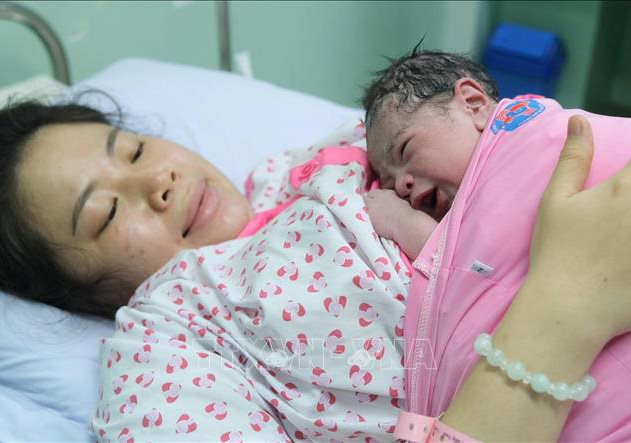
According to a new circular issued by the Ministry of Health, which will come into force on March 10, 21 cities and provinces will reward women who give birth to two kids before they turn 35 in a bid to encourage women in areas that suffer from low fertility rates to give birth.
According to a new circular issued by the Ministry of Health, which will come into force on March 10, 21 cities and provinces will reward women who give birth to two kids before they turn 35 in a bid to encourage women in areas that suffer from low fertility rates to give birth.
 |
| A woman and her newborn are seen at a hospital in HCMC. HCMC and 20 other provinces plan to reward women who give birth to two children before they turn 35, in a bid to raise fertility rates – PHOTO: VNA |
These cities and provinces are mainly located in the south, including HCMC, Can Tho City, Dong Thap, Hau Giang, Ba Ria-Vung Tau, Binh Duong, Long An, Bac Lieu, Tay Ninh, Soc Trang, Ca Mau, Dong Nai, Tien Giang, Vinh Long, An Giang, Ben Tre and Kien Giang.
Women in Danang City and Quang Ngai, Khanh Hoa and Binh Thuan provinces in the central region will also be entitled to the reward, which can comprise cash or gifts depending on where the women live.
The circular also suggested that localities with low fertility rates reward communes and wards where over 60% of couples of reproductive age have at least two children. Meanwhile, in cities and provinces with high fertility rates, women who voluntarily use long-acting contraception methods after giving birth to two children should also be rewarded. This is expected to help narrow the fertility gap between different regions.
The fertility rates in many southern cities and provinces have significantly dropped in recent years. The average fertility rate of the localities mentioned above is just 1.5-1.6 children per woman of reproductive age. Particularly, HCMC’s fertility rate in 2019 and 2016 was just 1.39 and 1.24 children per woman, respectively, the lowest in the country.
The country’s average fertility rate has been 2.09 over the past three years, lower than the United Nations Population Division’s recommendation of 2.1 children per woman to sustain the population.
Nguyen Dinh Cu, chairman of the Scientific Council at the Institute of Population, Health and Development, said the high expenses, especially money to raise children as well as housing and job burdens are the main reasons for the declining fertility rates in Vietnam.
Local authorities worry that low fertility rates in an extended period will bring about many challenges for public health and socioeconomic development such as a rapidly aging population, a shortage of human resources and larger life quality gaps between different groups of people.
According to the World Bank, Vietnam’s population is ageing at a pace faster than any of its regional peers. Vietnam entered the aging phase in 2011 and remains among the most rapidly aging countries in the world and, as such, might become an aged country around 2035 and a super-aging country by 2050.
As of late 2020, the country had 7.4 million elderly people, accounting for 7.7% of the population, with over two million aged 80 or above. By 2050, the number of elderly people in the country would increase to 22.3 million, making up 20.4% of the population.
(Source:SGT)




